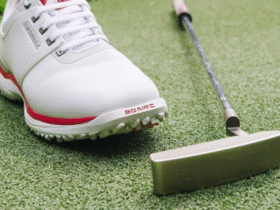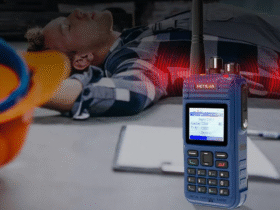In a world where stress is nearly inescapable, people are constantly looking for ways to cope—methods that are practical, accessible, and effective. From therapy to breathing exercises and yoga to medication, there’s a wide range of tools for managing tension. But what if something as simple as fidgeting could actually help?
Fidgeting, once considered a sign of distraction or nervousness, is now being embraced for its potential calming benefits. With the rise of fidget tools like cubes, spinners, and sticks, many are discovering that small, repetitive movements can make a big difference in how we handle stress and stay focused.
So, how exactly does fidgeting support relaxation? And can something so small truly influence mental well-being? Let’s explore the science and practicality of fidgeting as a tool for stress relief.
What Is Fidgeting?
Fidgeting refers to small, often unconscious movements of the hands, feet, or body—like tapping a pencil, clicking a pen, bouncing a leg, or twisting a ring. While these behaviors were traditionally seen as signs of anxiety, boredom, or lack of focus, modern psychology is rethinking this perception.
Why Do We Fidget?
Fidgeting is a natural self-regulation response. When the brain feels overwhelmed, under-stimulated, or anxious, the body finds a way to burn off excess energy or refocus attention. It’s a built-in coping mechanism that helps us maintain alertness and manage internal stress.
The Rise of Fidget Tools
The popularity of fidget tools exploded in recent years—especially during the global shift to remote work and online learning. From students with attention difficulties to adults managing workplace stress, people found comfort in tactile stimulation that these tools provide.
Popular Types of Fidget Tools:
- Fidget cubes – feature buttons, switches, and dials
- Fidget spinners – rotate between fingers for visual and tactile satisfaction
- Fidget rings and bracelets – subtle, wearable options
- Fidget putty – moldable textures for sensory relief
- Fidget stick – a sleek, balanced device that rolls and flips between fingers
Each tool caters to different needs, but all offer the same core benefit: rhythmic, physical activity that soothes the nervous system.
How Fidgeting Helps Ease Stress
Fidgeting isn’t just a nervous habit—it can be a calming, grounding action. Here’s how small movements influence stress levels.
1. Promotes Mind-Body Connection
When you’re stressed, it’s easy to feel disconnected from your body. Fidgeting re-establishes that connection. Engaging in tactile movement helps you stay present, giving your body a simple task while allowing your mind to slow down.
2. Regulates the Nervous System
Repetitive motion can stimulate the parasympathetic nervous system—your body’s “rest and digest” mode. This reduces cortisol levels and heart rate, helping you feel more grounded.
3. Improves Focus and Concentration
Stress and anxiety often impair attention. Fidgeting provides just enough stimulation to occupy your hands while freeing up cognitive resources, making it easier to focus on the task at hand.
4. Acts as a Distraction
Fidgeting can break the cycle of anxious thoughts. By redirecting your attention to a physical sensation—like flipping a fidget stick between your fingers—you can pull yourself out of rumination and into the present.
Science-Backed Benefits of Fidgeting
Research supports the idea that fidgeting can be beneficial, particularly for individuals with ADHD, anxiety, and sensory processing challenges.
- A study published in Cognitive Neuropsychology found that physical movement during cognitive tasks improved working memory in children with ADHD.
- In a 2018 article in Frontiers in Psychology, researchers suggested that small motor activity may support information processing and sustained attention.
- Occupational therapists have long used sensory tools—including fidget devices—to help clients manage overstimulation or improve concentration.
While more studies are needed, the existing research is promising and supports the idea that fidgeting isn’t just a distraction—it can be a tool for better regulation.
Who Benefits Most from Fidgeting?
Fidgeting is for everyone, but certain groups may see even more value:
Students
Children and teens with ADHD or learning challenges often find it easier to focus when their hands are engaged. Teachers increasingly allow quiet fidget tools in classrooms for this reason.
Office Workers
Sitting for long periods, back-to-back meetings, and screen fatigue are all common in office environments. Fidgeting provides subtle relief and a moment of calm in high-pressure settings.
People with Anxiety or OCD
Fidget tools can offer a safe outlet for nervous energy, replacing more harmful coping habits like nail-biting or skin-picking.
Neurodivergent Individuals
People with autism or sensory processing disorders often benefit from tactile input. Fidgeting can help reduce overwhelm, improve attention, and create a sense of comfort.
How to Incorporate Fidgeting Into Your Routine
Fidgeting works best when it’s intentional and unobtrusive. Here are some ways to naturally include it in your day:
While Working
Keep a quiet tool like a fidget cube or fidget stick on your desk. Use it during long meetings or brainstorming sessions to stay engaged without disrupting others.
During Transit
Commuting—whether by car, train, or bus—can be stressful. Use a small, portable tool to pass time and reduce tension.
While Watching TV or Listening to Podcasts
Idle moments are perfect for fidgeting. It helps your body stay active while your mind is relaxed.
Before Bed
Fidgeting can help wind down an anxious mind. A slow, repetitive motion can act like a form of meditation, helping you transition to sleep more easily.
Choosing the Right Fidget Tool
There’s no one-size-fits-all approach, so consider the following:
Environment
If you work in a quiet office, choose a noiseless option like a fidget stick or silicone ring. Loud clickers might not be suitable.
Sensory Preference
Do you like soft textures or solid resistance? Some people prefer squishy tools, while others like the sleek movement of weighted gadgets.
Size and Portability
If you’re often on the move, pick something pocket-sized that’s easy to carry. Magnetic rings or mini rollers are discreet and convenient.
Aesthetic Appeal
Modern fidget tools now come in stylish, minimalist designs. You no longer have to choose between functionality and appearance.
What to Avoid
While fidgeting can be helpful, it’s important to use the right tool the right way.
- Overstimulation: Don’t choose flashy or noisy tools that distract from your tasks.
- Disruption: Avoid fidgeting in a way that annoys or distracts people around you.
- Dependency: Fidget tools are supportive—not a cure. If you’re using them to avoid deeper emotional or mental challenges, consider pairing them with therapy or mindfulness practices.
Can Fidgeting Replace Other Stress Relief Methods?
Fidgeting is a great complement—but not a substitute—for other wellness tools. It works best when integrated into a larger stress management strategy that includes:
- Physical activity
- Quality sleep
- Mindfulness and breathwork
- Therapy or coaching, when needed
Think of fidgeting as a bridge between your body and your mind—a subtle, effective cue that brings you back to the present moment.
Final Thoughts: Small Movements, Big Relief
In a world full of complex stress solutions, it’s easy to overlook the simplest tools. Fidgeting—something we’ve all done instinctively since childhood—offers a quiet kind of power. Whether it’s flipping a fidget stick, squeezing a soft ball, or rolling a magnetic ring, these small acts of movement can help release tension, sharpen focus, and restore calm.
While fidgeting won’t solve every problem, it can absolutely support a more balanced, grounded life. And in moments when stress feels overwhelming, having a small, reliable tool in your pocket might be exactly what you need to reset, refocus, and breathe.














Leave a Reply